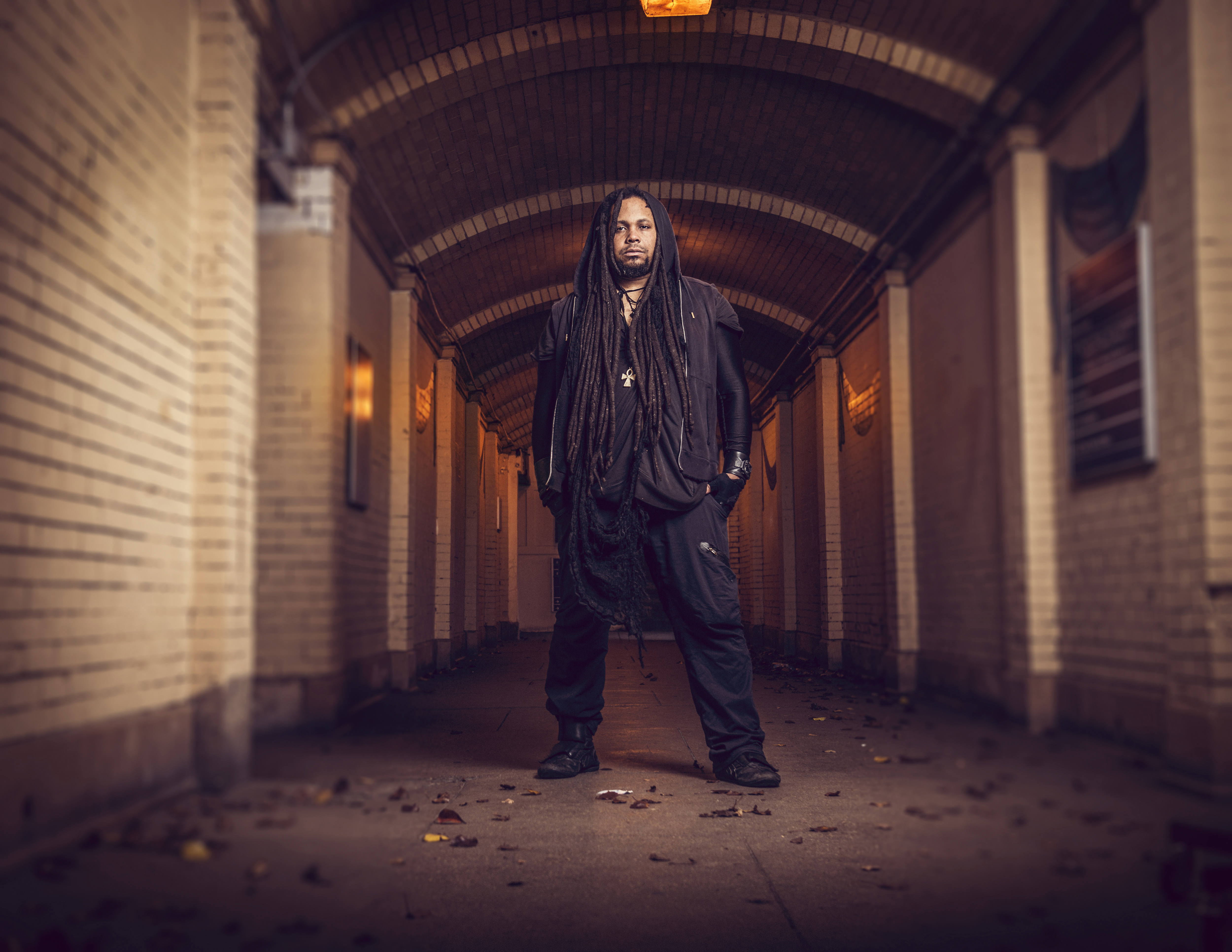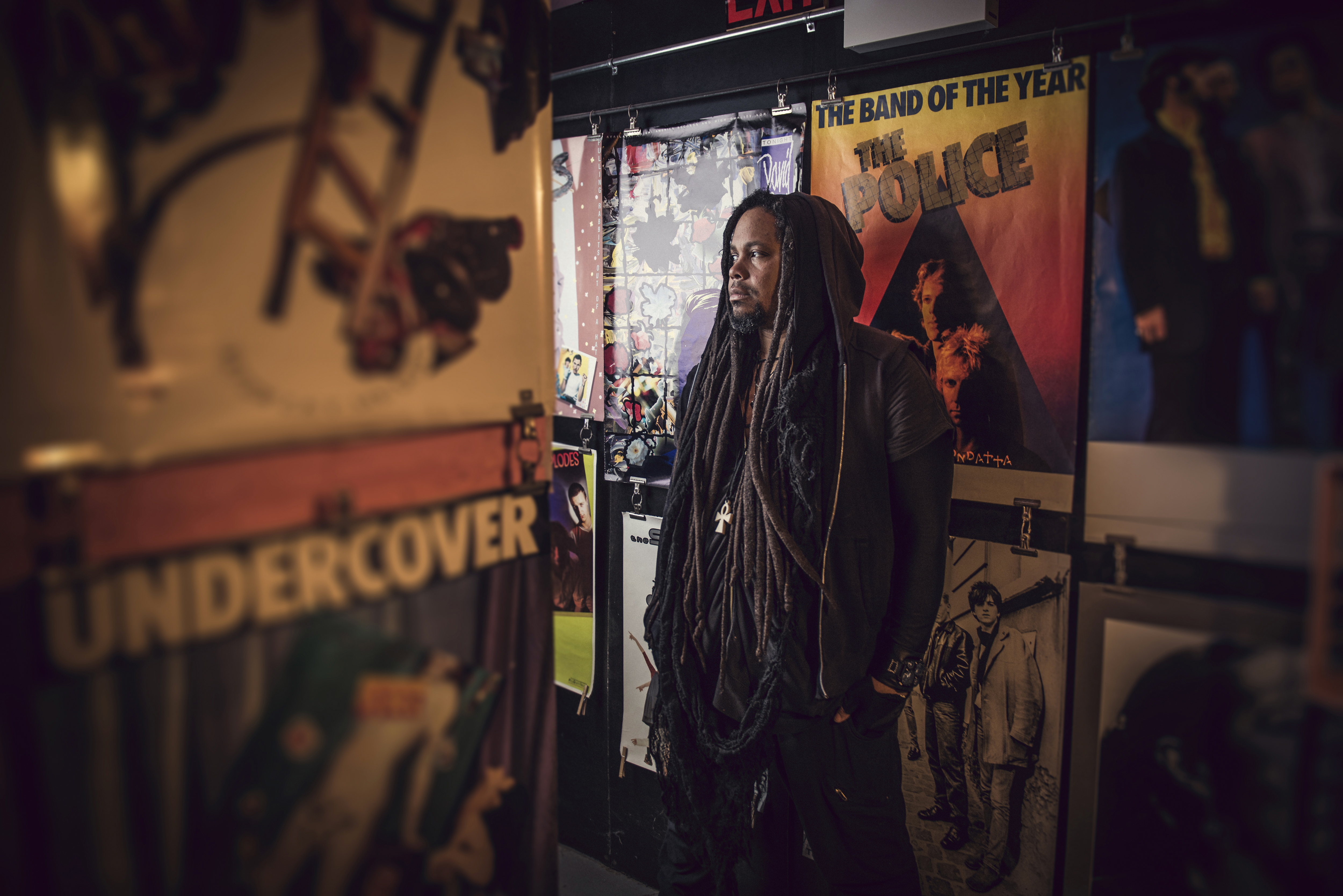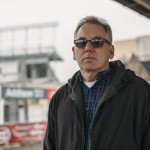Interview by Peter Margasak
Photos by Bill Whitmire
I grew up in the far south side of Chicago in the Pullman area, like 115th and King Drive. I was raised by first cousins of my mom. I wasn’t really conscious of the music they listened to. I would hear it around the house but I didn’t know what it was. A lot of jazz classics and blues stuff. They had me on some traditional stuff rather than street culture.
My biological mom came back into my life when I was around 12. I would go and do sleepovers at her place, but I only did that so I could go out and party on the weekend. I would hang out for a bit and then I was like, “I’ll be back by Sunday.” I would just kick it in the streets. Sometimes we’d go to sock hops at Mendel, Kennedy King College, Academy of Our Lady, or Lindblom, or somebody’s basement party, where I would get introduced to a lot of music. Sometimes I’d meet people from downtown or the suburbs, and you’d hang out and ride BMX. I got introduced to Medusas, Limelight, McGreevey’s, Off the Alley, and regular house parties.
I wanted to be connected to something that I felt had a higher purpose than what I was used to. Even now if I tell people I dabble in the arts the first thing they ask is, “Oh, what, hip-hop or reggae?” It’s always that pigeonhole. I don’t like reggae. I don’t like hip-hop. And when I explain what I do they just look at me like, “You’re strange.” There’s always been that thing hanging over me ever since I was young. I met people from different backgrounds—I got into Rush and Psychedelic Furs, and I listened to WKKC—they played a lot of eclectic stuff. I would sit back and observe what was stupid and what was life-enhancing, so I went with what was life-enhancing, the stuff that would help me evolve as a human being.

I didn’t start at Northwestern until 1992. I studied cultural anthropology with a minor in ethnographic film studies. I finished in ’96 and started grad school there, an independent scholar program, but I didn’t finish because I was going through some redefining moments and I felt like it wasn’t for me. There were a lot of differences in ideology and there was a certain narrative that was being dictated in academia that wasn’t fair and impartial to all cultures. To me it was foolishness, and I walked away.
In the house music culture scene, I was primarily a dancer. Now everybody is a DJ or a promoter, but there ain’t nobody dancing, which is ass-backwards. If you were a dancer back then, people needed you because you got the party started. Promoters would see me and my friends and we’d get in for free because we’d get everybody else hyped up. It went from there to them paying me to do flyers and to promote stuff, and after a while I decided to do my own stuff and make money throwing parties. I did stuff at 531 S. Wabash, 2210 S. Michigan, Edge of the Lookingglass, Mars Gallery, 19th and Michigan. It was a mixture of industrial, Italian disco, Euro synth—a mish mosh.
I used to work at Columbia College Dance Center, did promotions for them as well. I got caught up in the performance art thing, so I started getting into Kate Bush, Laurie Anderson, Dead Can Dance, John Cage, Philip Glass. I started opening up some of those events as a DJ, doing experimental sound structures. Over time I got mentors, like Adonis and Steve Poindexter. Adonis gave me some equipment to practice my craft. Everybody had DAT machines, and I’m running around recording my stuff on VHS tape. I asked some people for help, and they were like, “Just do it yourself.” I wondered if that was a dis or the truth, and I decided to go it alone—and that’s when I started my label back in ’96.
“Now everybody is a DJ or a promoter, but there ain’t nobody dancing, which is ass-backwards.”
I walked away from doing parties around 2000. I did a residency at a bar in Lincoln Park called Bar 3 for about four years. If I could go into Lincoln Park and play good-quality deep house and make them like it, it was kind of like me doing market research. It was my own personal focus group. Around 2006—that’s when more stuff started coming out on my own label. I worked out a deal with Groove Distribution, who’s supported me for almost ten years. There were pockets in Europe and the U.S. where my records sold.
My adoptive parents were into Sun Ra, but I didn’t get into it until I went to university. Northwestern’s radio station played all kinds of jazz. It made me feel safe and it kept my anxiety down.
I do audio texturizing—playing multiple formats, collages of music; I’ll play some jazz, some industrial, some new age, and some ambient stuff, with a house track or an obscure disco record, with all five playing at once. The funny part is that I suck at beat matching with just two records or two CDs, but for some reason I can have five things going at once all cohesively flowing.

That’s what they wanted me to do at intermission [at London’s Barbican during a Sun Ra Arkestra show]. I met the Arkestra and they said, you’re going onstage with us. They made me put on an outfit and read a bunch of Sun Ra poetry and introduce them. That’s where I met Matt Werth of RVNG. He thought it would be interesting for me to do what I do with machines but live with other human beings. I thought it was demented. For a long time I told him no. So I prepped and came in with some concepts and backing tracks. By the first or second day we had, like, 30 tracks.
Now I got to deal with Ninja Tune—that’s coming out next year. They’re more like, “Can you make it shorter?” I’m not knocking it, because I’m learning a different aspect of the craft. They might be critiquing me, but it’s helping me be better.
I’ve done a couple of remixes for Warp, and now I’m working on a project for them for 2017. I’m thinking of doing a project like Ken Nordine’s Word Jazz for them. I really like what Ken Nordine does—this motherfucker is schizophrenic as hell, but he found a way to channel his multiple personalities through his art, and sometimes I feel like that—talking to myself and having a conversation back and forth when I’m doing things. v


